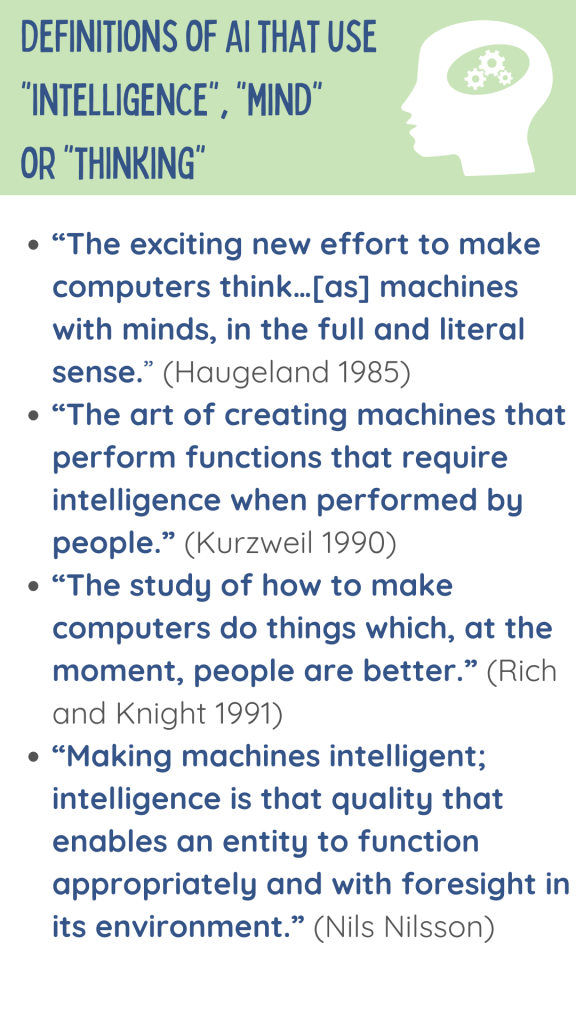2
Artificial Intelligence: an intuitive understanding
You could open a textbook of artificial intelligence or do a quick search on the internet, and you’ll see that definitions of AI vary. There is no good way to tell what AI is, where it is used and what role it plays. It could be a complex stand-alone system like a robot or an autonomous car. It could be just a few lines of code inside another piece of software, playing a small role.
Artificial intelligence involves a collection of programs that do a diverse set of tasks. Mathematically and algorithmically, the lines blur – there is no clear indication of where AI starts and other technologies stop.

Furthermore, many experts disagree with the use of the word ‘intelligence’ – artificial intelligence has no resemblance to human intelligence! Yet, the word suggests to us what these programs are meant to achieve – the thread that connects them.
Ultimately, AI systems are machine based. They make predictions, recommendations or decisions by
- perceiving real or virtual environments (using items such as microphones or cameras),
- simplifying data and analysing it,
- using that analysis to make a decision or prediction1.
When you come across a system that:
- recognizes what you have written or what you are saying (translation software, text recognition, face recognition, personal assistants, chatbox); or,
- seems to know you better the longer you use it (Youtube video recommendation, news recommendation, Amazon item recommendation, Facebook suggested friends, targeted ads) ; or,
- is capable of predicting an outcome, given incomplete and fast-changing information (fastest route to go somewhere, stock prices in the near future),
…AI is probably involved.

The AI around us
Artificial Intelligence has become the technology that gives its user the edge that’s required to succeed.
Almost every field uses AI in one form or the other:
-
From business to research, many fields use language apps to transcribe speech on the fly and obtain translation of impressive quality.
-
Medicine profits from image analysis and AI-based decision-support tools2.
-
In agriculture, AI driven systems help optimize the use of available resources.
-
Every day there’s newsabout AI breakthroughs in games, art, industry and commerce.
At school, choosing courseware, adapting to individual learners, assessing them in a productive way and managing logistics, are all “intelligent” activities. According to the definition(s), AI-based software should ideally be able to help with pursuits such as these.
ACTIVITY
Make a list of five technologies you or your students have used in the past two years. How many of them, according to you, contain AI?
Alan Turing is considered by many as the father of computer science. Many of the new ideas in AI today were actually also introduced by Alan Turing, before the term ‘Artificial Intelligence’ was invented!
1 The OECD AI Principles, 2019.
